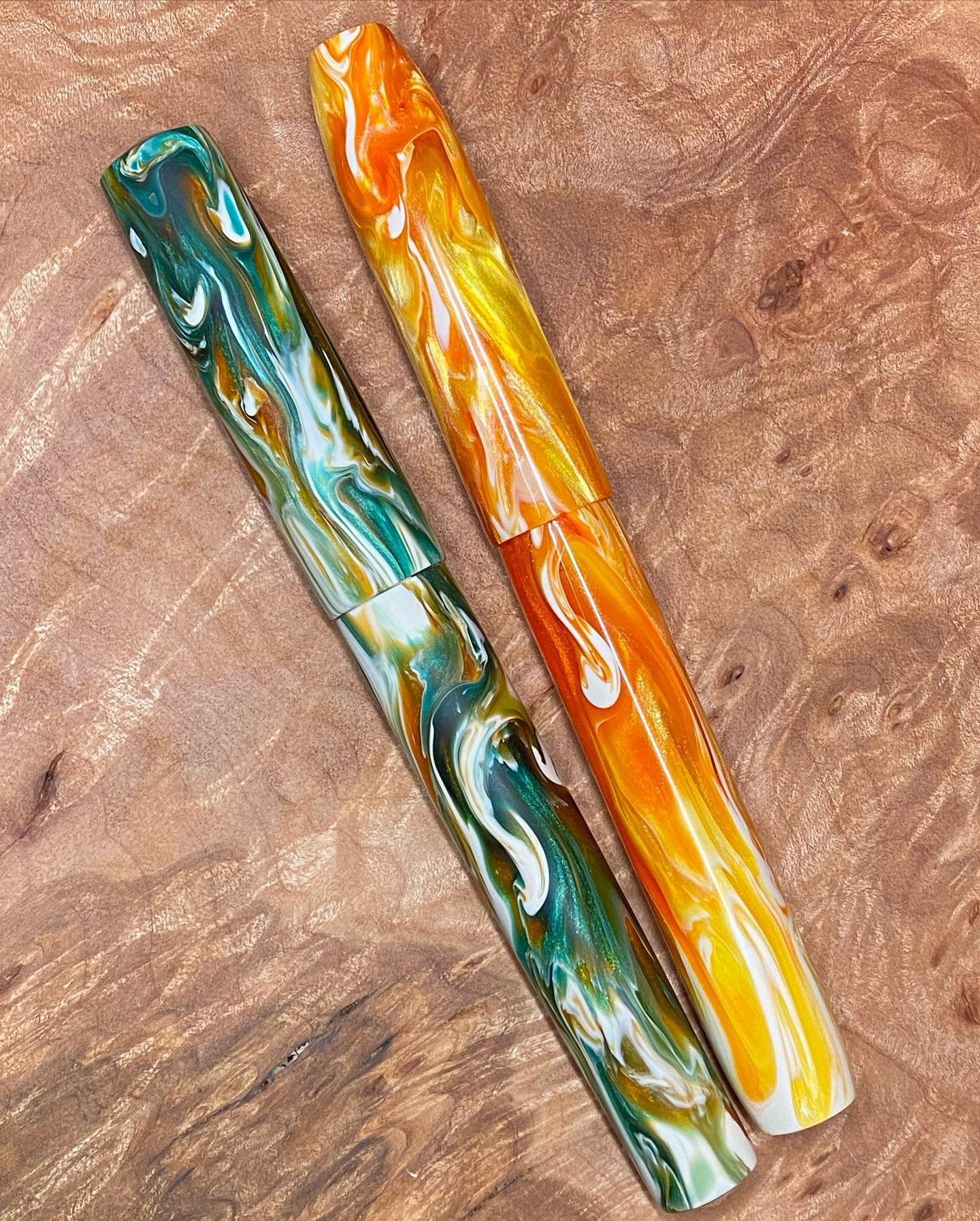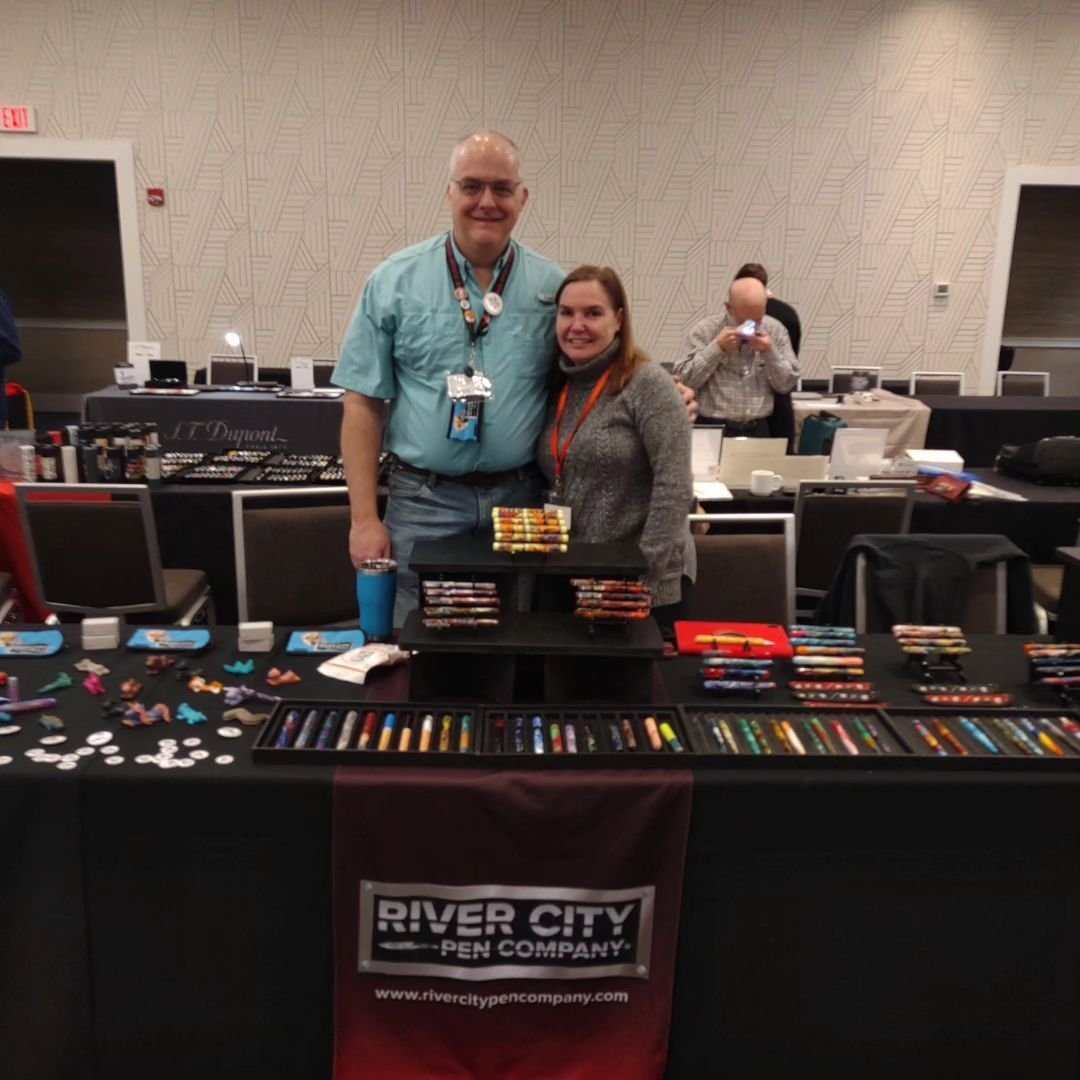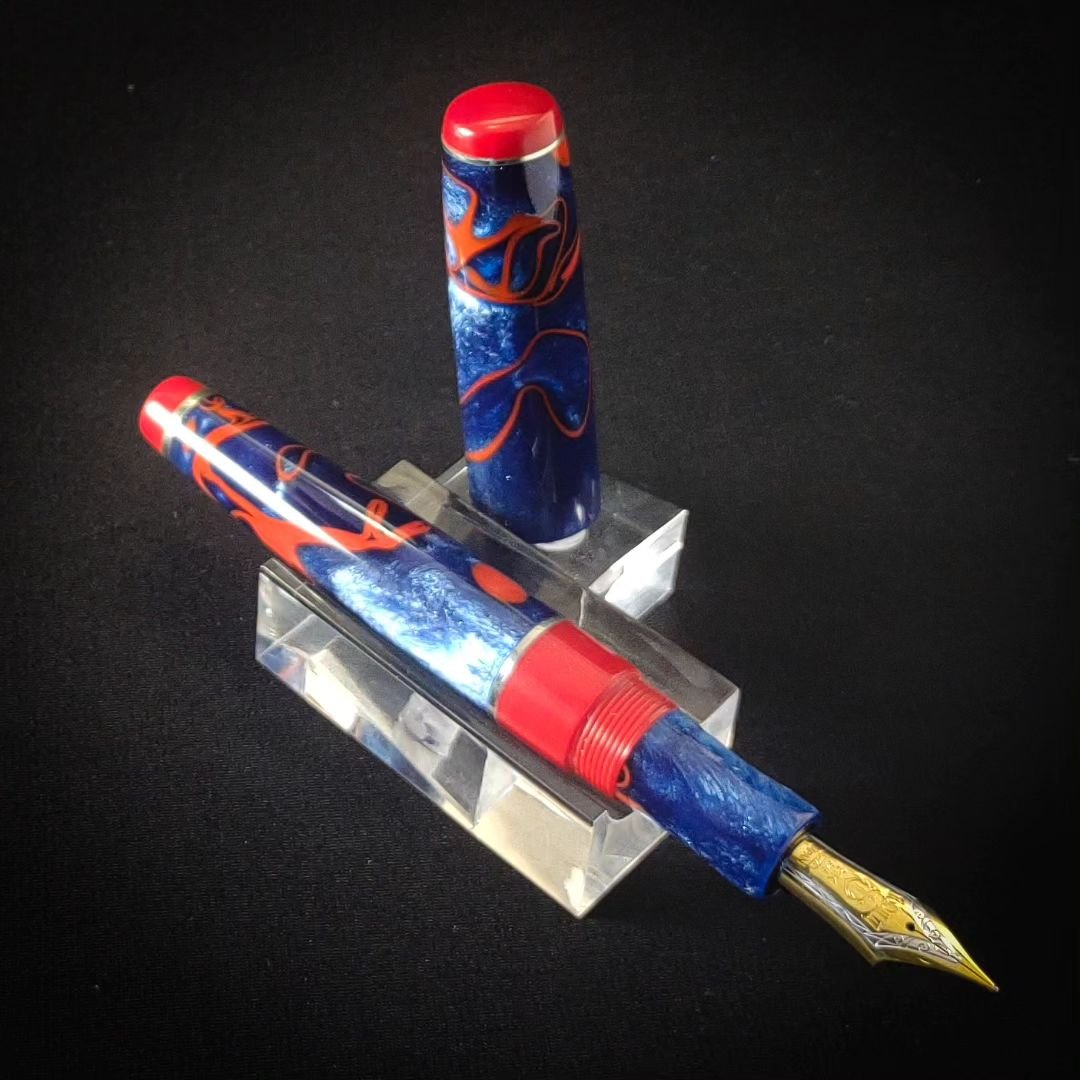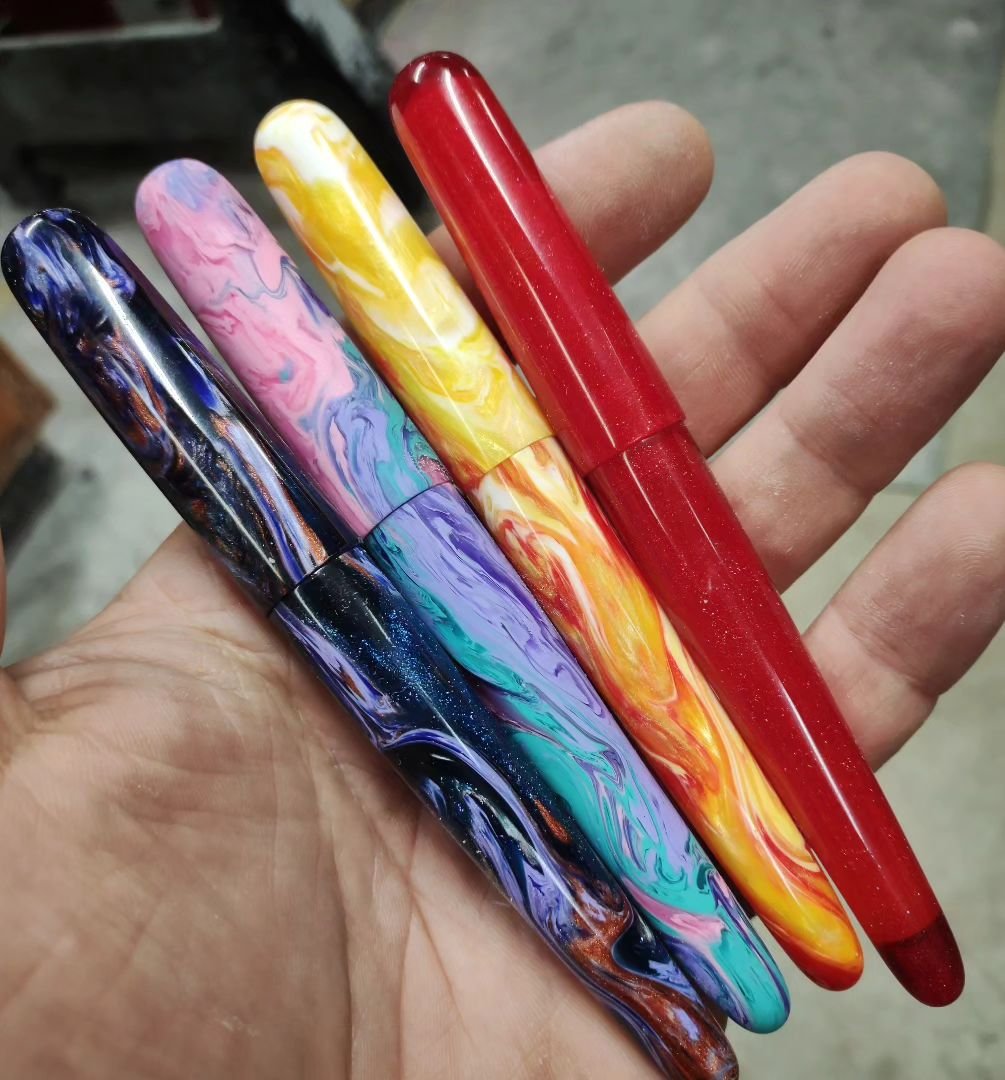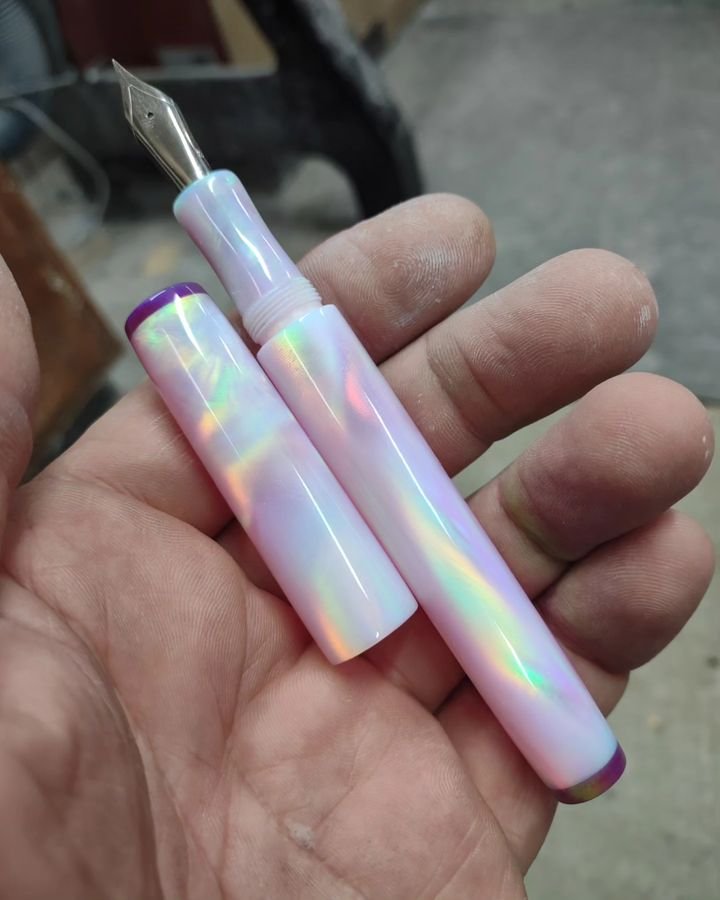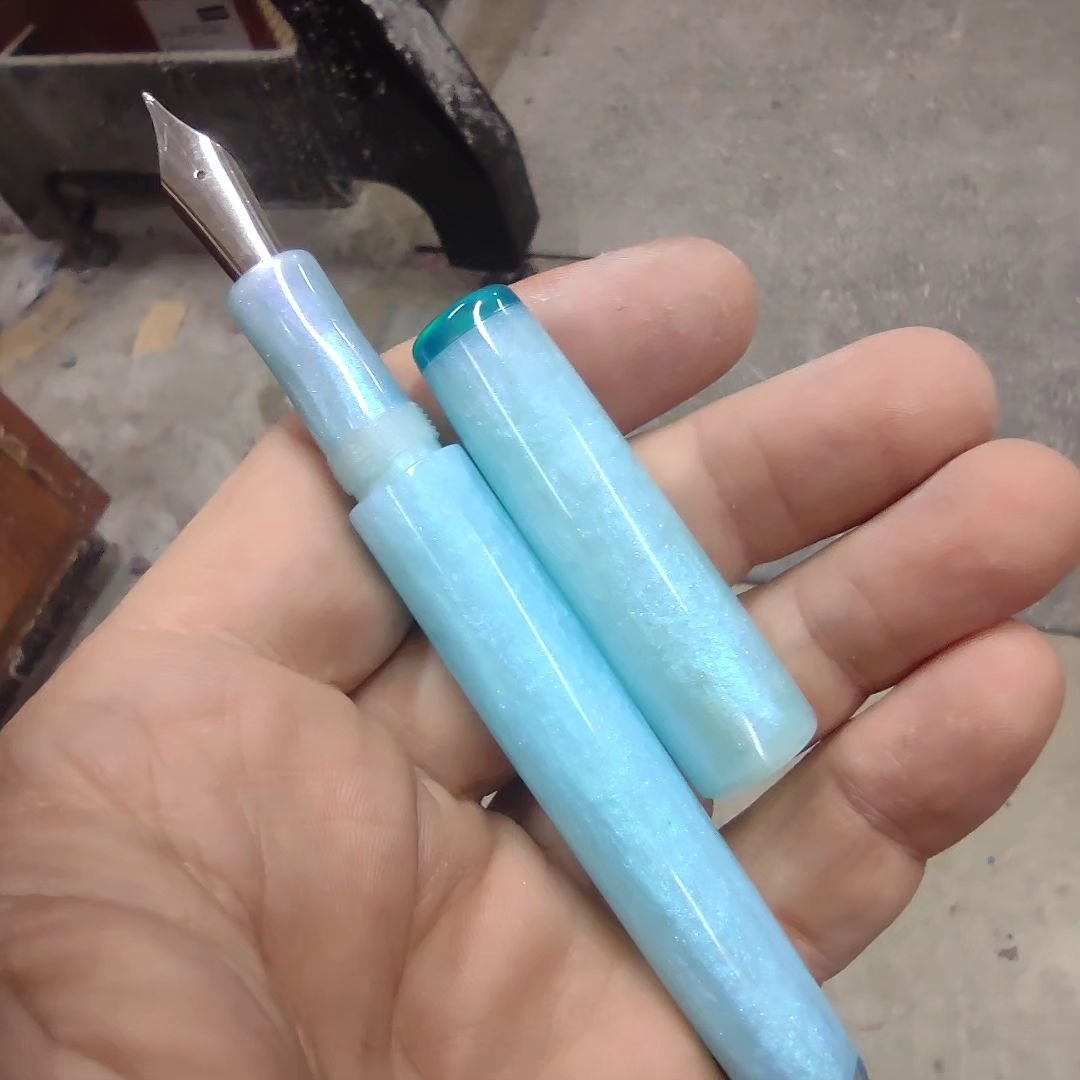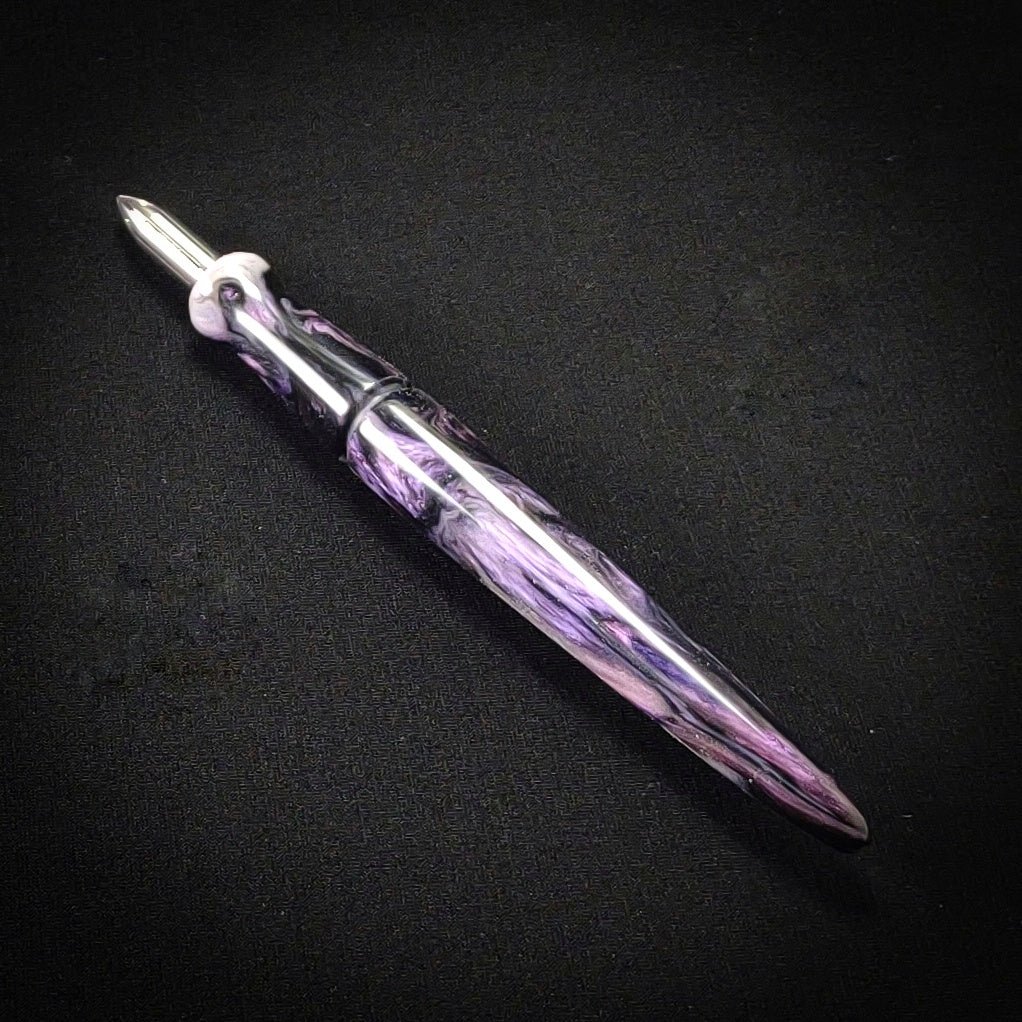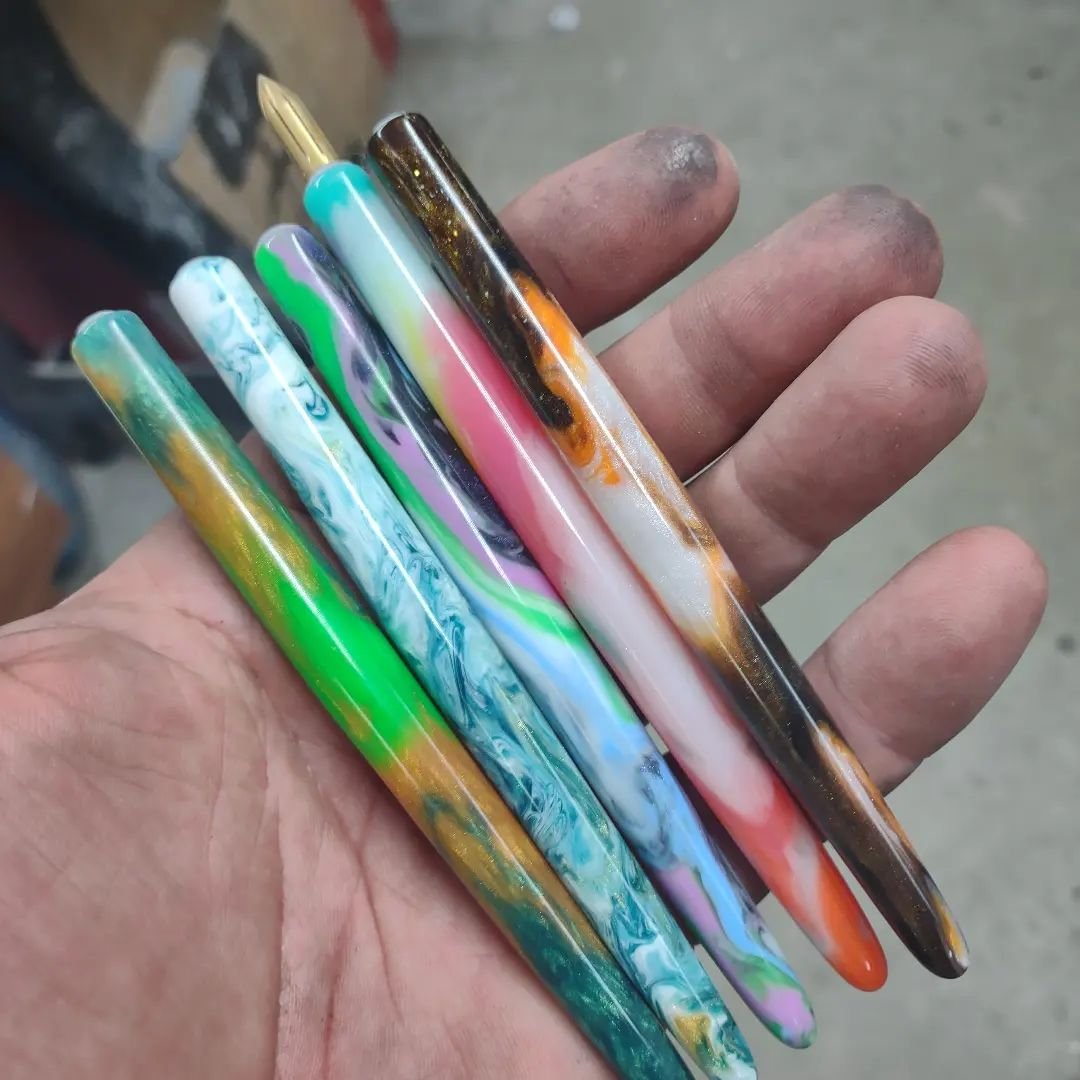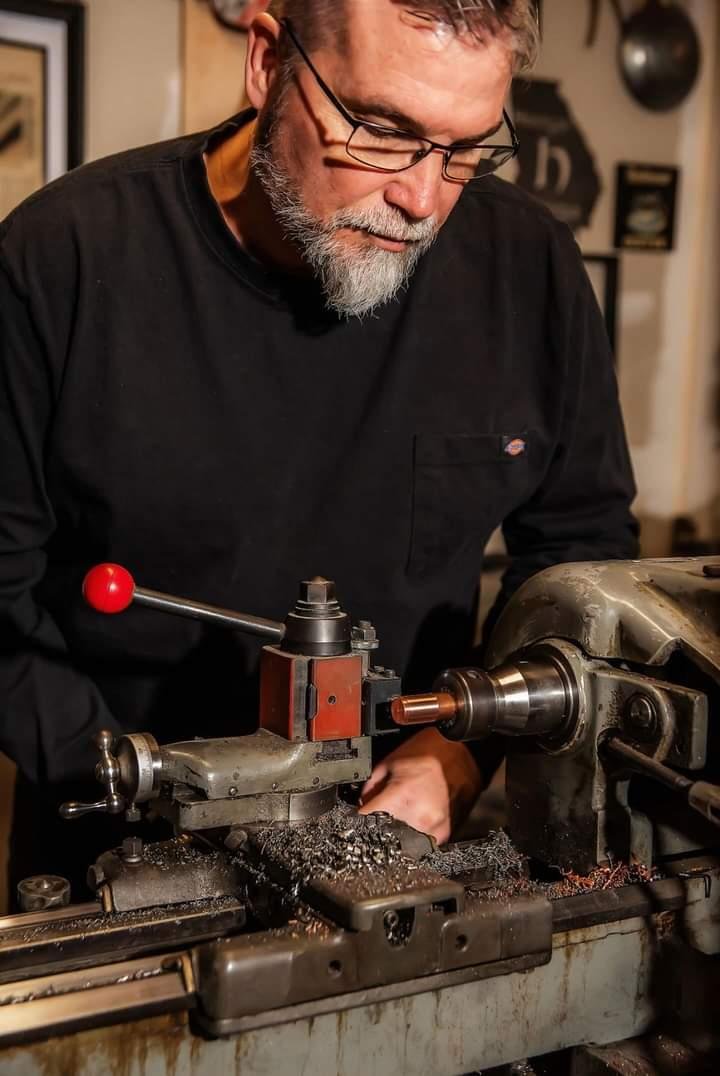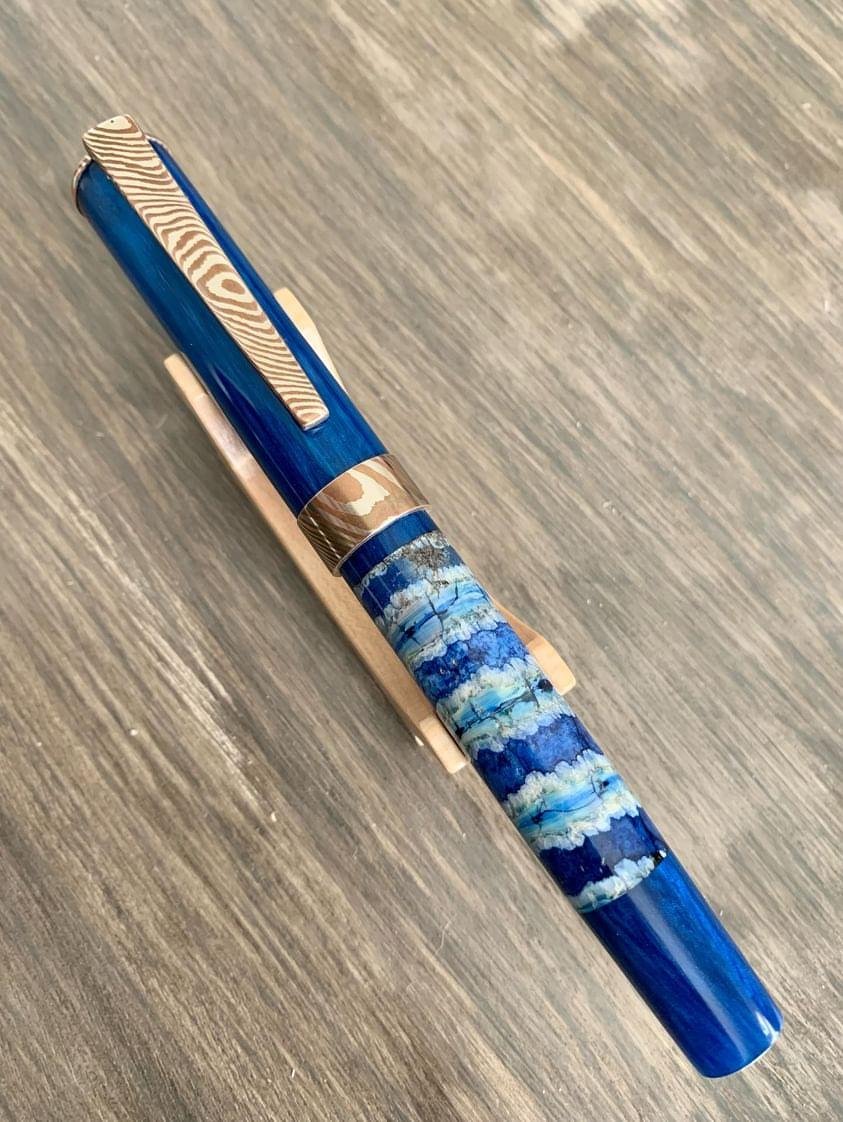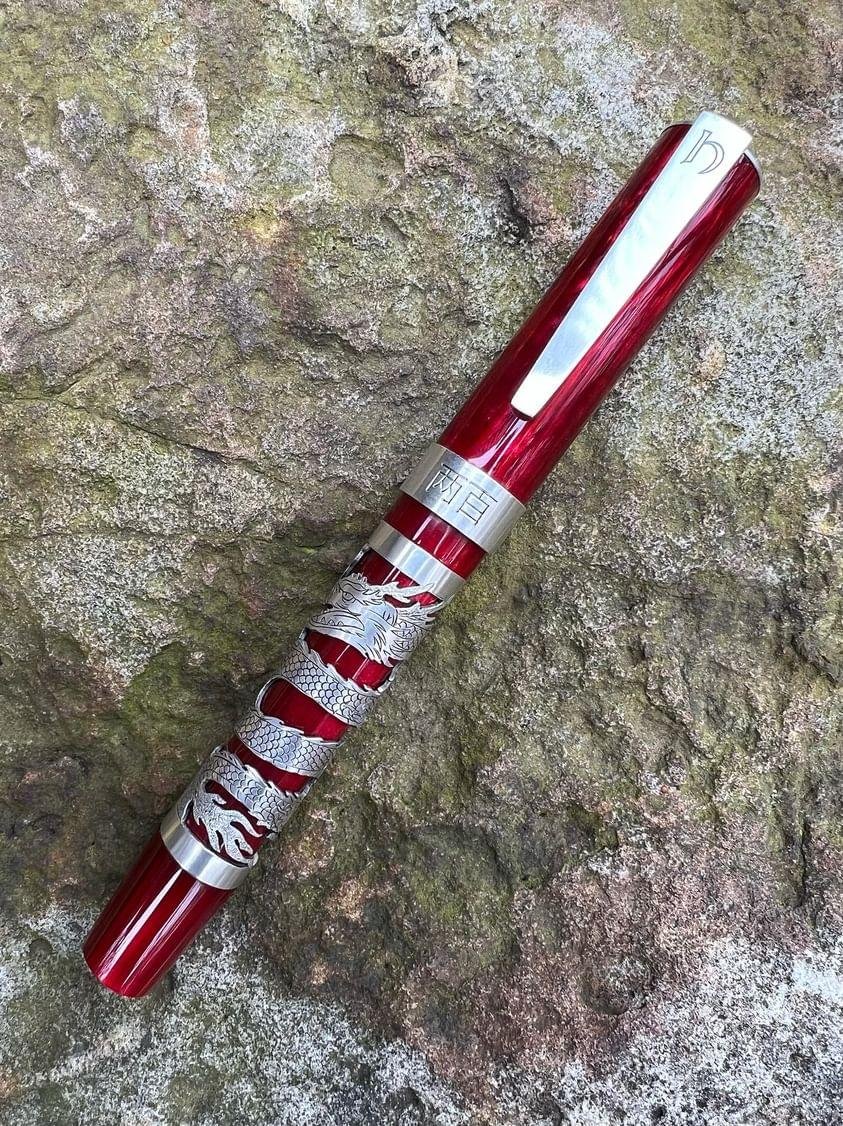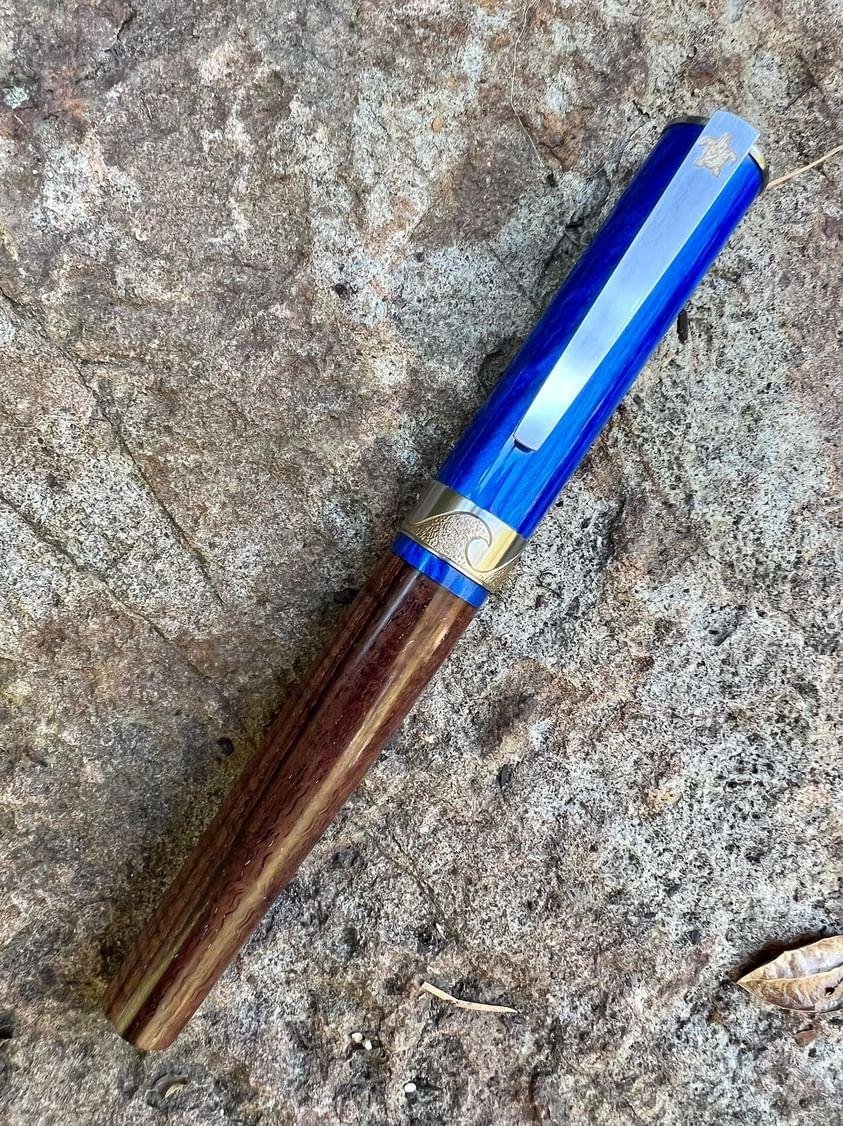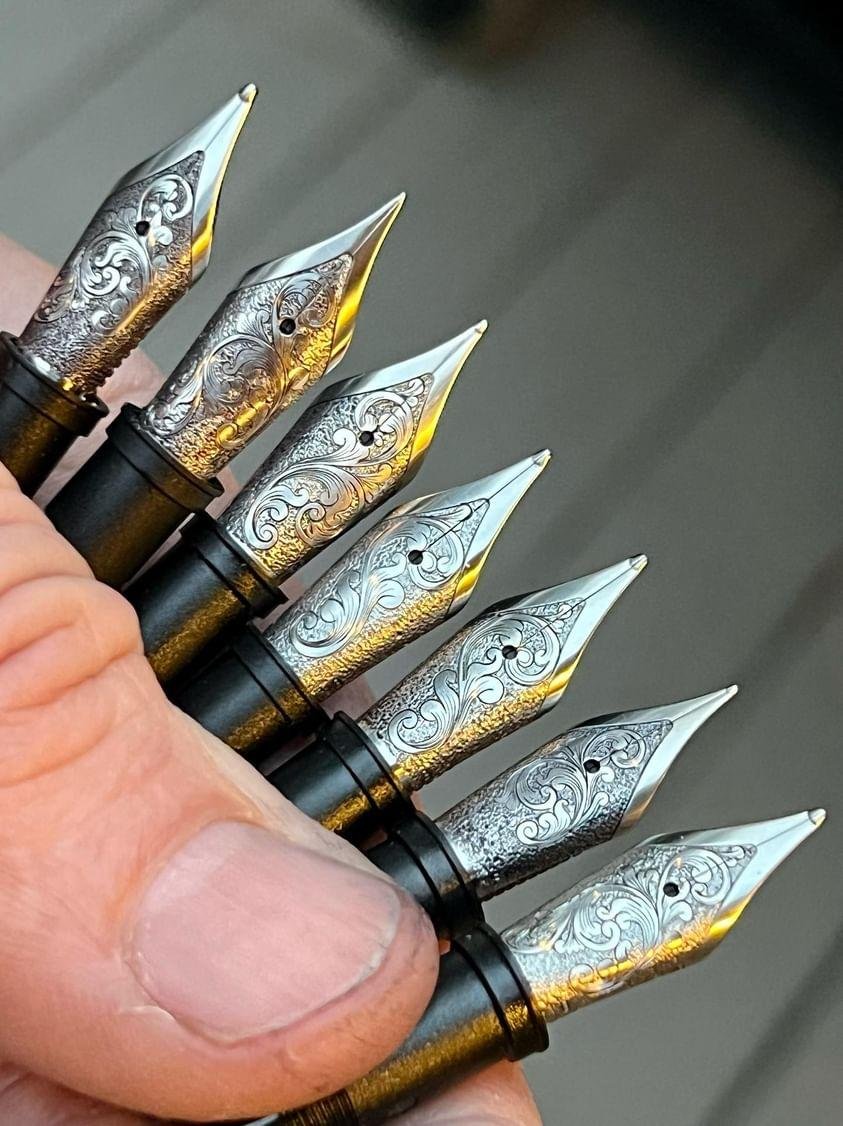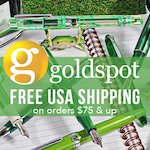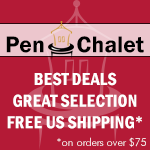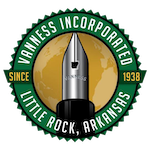(Caroline Foty's first fountain pen was a 1970s Sheaffer No Nonsense that still writes perfectly. Since she discovered pens by independent makers, she wants "one of each, please" and wants to meet all the makers. Maybe you do, too. She lives in Baltimore with pens, cats, and all kinds of fiber arts supplies.)
If you ask Bart Conner the classic social question, What’s your sign? – the answer may depend upon the context. Under normal circumstances he’ll tell you he’s a Gemini, but if you’re a pen person the answer may be, “Cancer is next!” or even, “All of them!”
Bart recently celebrated his first anniversary as a pen company, but for quite awhile before that he specialized in bowls, having seen a YouTube video and thought it looked like fun. “At first I made some of the worst bowls you could even imagine, but I loved it.” Then, his father asked for a handmade pen to give as a gift to one of his doctors, and he got some nice wood and made a kit fountain pen.
While his father was satisfied, he himself wasn’t happy with the result, and he reached out to the president of his local turning club to ask if he had suggestions for how to create something better. The president knew a guy, right there in South Carolina, which is how he ended up spending a day in spring of 2022 with Jonathon Brooks.
Zodiac Pen Company Virgo.
That day Bart made a pen, and got a list of the tools and materials he’d need in addition to his wood lathe, to keep on making kitless pens. It took a couple of months to acquire it all, after which “I made some really bad pens!” Then he sent one to Lauren Elliott of Lucky Star Pens who recommended he focus on improving his threads. In the process, he fell in love with making pens. “It’s less physically demanding than bowls – I would harvest trees from landfills or from tree services. Blanks for those can weigh 80 pounds.”
In November of 2022, someone bought a pen off his Etsy shop, and loved it and told him to make more – that was his first sale to a “pen person” and he began to gain the attention of other “pen people.” The following April, he got a lucky break when he was offered a table for that year’s DC Pen Show. At first he added the pens to his Logs To Treasures website, but “pen people didn’t care about the bowls” so he set about creating a separate pen company presence.
Zodiac Pen Company Gemini.
“I’m a Gemini and I’ve always been drawn to how much you can learn about people from the stereotypes of the zodiac signs.” His first thought was to call the company Gemini, but “if I did Zodiac instead of Gemini I could have twelve models!” His company logo is the constellation Gemini, and the Gemini was his first pen model – “Gemini was the pen I wanted.” There are eight so far, with more in the works. Cancer is in development currently, and his customer base has been clamoring for Leo and Libra. Aquarius is the knottiest design problem, so it may be awhile for that one. “And there’s going to be a thirteenth. The modernized church calendar lost the thirteenth month and the thirteenth sign.” That one is still a long-term plan.
There are multiple factors that reduce the time for designing new models. Bart’s day job is for a paper manufacturer. (Before you get excited, he emphasizes that they make brown stock like the paper Amazon packs in its boxes as padding.) Demand for his existing pens also needs to be met, and has increased due to recent online attention – on Instagram, on Lori Tara and Vanessa Langton’s YouTube show Juicy Broads, and on The Pen Addict. “Once you start growing you have less time for creativity.” Because he still does all his work on a wood lathe, shaping is done one at a time by hand, which can mean that no two pens with complex curves will be completely identical. While he does take commissions, show season also means the need to build inventory, slow down acceptance of commissions, and keep pens he makes instead of adding them to his website.
Zodiac Pen Company Materials.
With such a crowded schedule, Bart has no desire to cast his own materials. “Anything I can think of, I can call Bob Dupras or Tim Crowe and pitch the idea and they’ll have a sample in a week. I have no need to do that.” Like many makers, he has accumulated a supply of blanks. “To get blanks from Jonathon, I’d rather drive down. He has blanks in bins that you never see – test pours that companies didn’t like, for example. Anyone who has a chance to spend a few hours with Jonathon should do it!” Besides adding to his stash of blanks, he can pitch new ideas and get feedback on his latest pens.
Zodiac Pen Company Capricron.
Do you have a favorite pen you didn’t make? Despite having a collection of maker pens, he’s mostly never inked them, just has them to support his friends in the community. His favorite pen to write with is a Visconti Homo Sapiens Steel Age. For design, he particularly admires the pens by Ben Stewart of Mayfair Pens. “You see those pens and they’re immediately identifiable. But people who like conventional shapes may shy away from those. You have to think where you want to be in the market.” With a possibility of twelve (or thirteen) models, he’s been able to cover all the bases. “My niece is a Pisces and she helped me with that design. She said it needed a fish tail, how do I give a pen a fish tail??”
Zodiac Pen Company Scorpio.
Family members provided inspiration for other pens in Bart’s repertoire. The Virgo model was designed for his daughter who has smaller hands and likes smaller pens. At the same time, “She’s like a mini-me,” so Virgo is a scaled down version of the Gemini. Capricorn was made with his son in mind. A common design theme is the flat finials. “I don’t like rounded finials, so my pens have flat finials – except for Sagittarius” the archer which called for something more tapered.
Inspiration for Bart comes from an internal drive to perfect what he’s doing. “I want every pen to be more perfect than the last pen, to make a perfect product, to have a pen that everybody would love if that’s even possible.” He derives great satisfaction from seeing people using what he makes. “Bowls or charcuterie boards are décor pieces – you sell them and never see them again, there’s no bowl community! I can take a rod and shape it into a tool people are carrying with them and using every day.” That community that collects and shares is something for which he’s continually grateful. “I have to thank everybody for giving a new maker a chance and loving my pens. Every maker I’ve reached out to with questions or problems has been willing to help. It’s a positive place to be.”
Bart Conner’s work can be seen on his Instagram @zodiacpencompany, at his website, and at shows in Baltimore, Atlanta, Pacific-Northwest, DC, and Orlando.
Enjoy reading The Pen Addict? Then consider becoming a member to receive additional weekly content, giveaways, and discounts in The Pen Addict shop. Plus, you support me and the site directly, for which I am very grateful.
Membership starts at just $5/month, with a discounted annual option available. To find out more about membership click here and join us!








